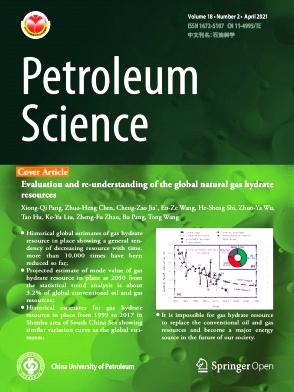基于强化学习的耦合井筒/油藏柱塞举升系统优化
IF 6.1
1区 工程技术
Q2 ENERGY & FUELS
引用次数: 0
摘要
在气藏开发的中后期,气井的储液加载成为一个普遍的挑战。柱塞举升作为一种间歇式生产技术,被广泛应用于气井的脱水。随着大数据和人工智能技术的发展,油气田开发的未来将朝着智能化、无人化、自动化的方向发展。目前,柱塞举升工作系统的优化主要基于专家经验和人工控制,主要关注柱塞举升的成功与否,而没有充分考虑不同工作系统对产气的影响。此外,气井中的液体加载是一个动态过程,柱塞举升的间歇性需要精确的建模;用恒定入流动力学来描述油藏流动引入了显著的误差。为了解决这些问题,本研究建立了柱塞举升井的井筒-油藏耦合模型,并根据现场测量结果验证了计算井口压力的结果。在此模型的基础上,提出了一种基于深度确定性策略梯度(DDPG)框架的优化控制算法。该算法旨在优化柱塞举升工作系统,以平衡整体油藏压力,稳定气水比,并最大限度地提高天然气产量。通过三种不同生产优化场景的仿真实验,比较强化学习算法(包括RL、PPO、DQN和提出的DDPG)和传统优化算法(包括GA、PSO和贝叶斯优化)在提高生产效率方面的效果。结果表明,该耦合模型计算精度高,能够准确描述井筒和气藏系统的瞬态产量。所提出的DDPG算法在训练过程中以最小的误差获得了最高的奖励值,使累积产气量增加了5%,累积产液量增加了252%。DDPG算法在不同的优化场景中表现出鲁棒性,具有良好的适应性和泛化能力。本文章由计算机程序翻译,如有差异,请以英文原文为准。
Optimization of plunger lift working systems using reinforcement learning for coupled wellbore/reservoir
In the mid-to-late stages of gas reservoir development, liquid loading in gas wells becomes a common challenge. Plunger lift, as an intermittent production technique, is widely used for deliquification in gas wells. With the advancement of big data and artificial intelligence, the future of oil and gas field development is trending towards intelligent, unmanned, and automated operations. Currently, the optimization of plunger lift working systems is primarily based on expert experience and manual control, focusing mainly on the success of the plunger lift without adequately considering the impact of different working systems on gas production. Additionally, liquid loading in gas wells is a dynamic process, and the intermittent nature of plunger lift requires accurate modeling; using constant inflow dynamics to describe reservoir flow introduces significant errors. To address these challenges, this study establishes a coupled wellbore–reservoir model for plunger lift wells and validates the computational wellhead pressure results against field measurements. Building on this model, a novel optimization control algorithm based on the deep deterministic policy gradient (DDPG) framework is proposed. The algorithm aims to optimize plunger lift working systems to balance overall reservoir pressure, stabilize gas–water ratios, and maximize gas production. Through simulation experiments in three different production optimization scenarios, the effectiveness of reinforcement learning algorithms (including RL, PPO, DQN, and the proposed DDPG) and traditional optimization algorithms (including GA, PSO, and Bayesian optimization) in enhancing production efficiency is compared. The results demonstrate that the coupled model provides highly accurate calculations and can precisely describe the transient production of wellbore and gas reservoir systems. The proposed DDPG algorithm achieves the highest reward value during training with minimal error, leading to a potential increase in cumulative gas production by up to 5% and cumulative liquid production by 252%. The DDPG algorithm exhibits robustness across different optimization scenarios, showcasing excellent adaptability and generalization capabilities.
求助全文
通过发布文献求助,成功后即可免费获取论文全文。
去求助
来源期刊

Petroleum Science
地学-地球化学与地球物理
CiteScore
7.70
自引率
16.10%
发文量
311
审稿时长
63 days
期刊介绍:
Petroleum Science is the only English journal in China on petroleum science and technology that is intended for professionals engaged in petroleum science research and technical applications all over the world, as well as the managerial personnel of oil companies. It covers petroleum geology, petroleum geophysics, petroleum engineering, petrochemistry & chemical engineering, petroleum mechanics, and economic management. It aims to introduce the latest results in oil industry research in China, promote cooperation in petroleum science research between China and the rest of the world, and build a bridge for scientific communication between China and the world.
 求助内容:
求助内容: 应助结果提醒方式:
应助结果提醒方式:


